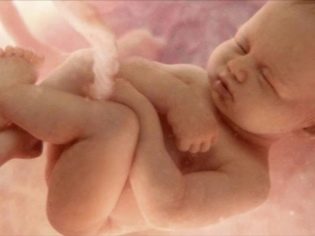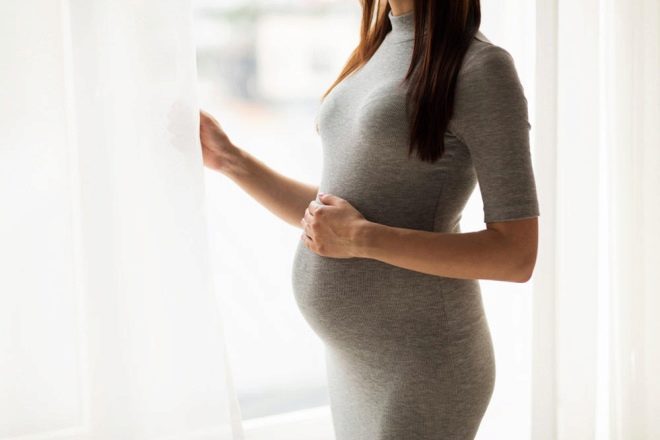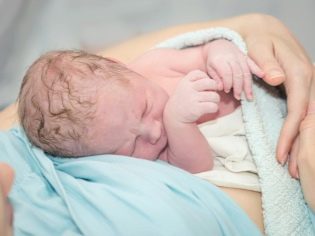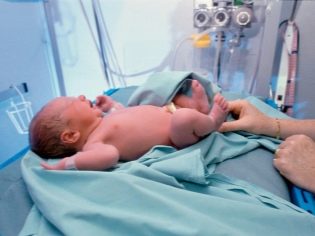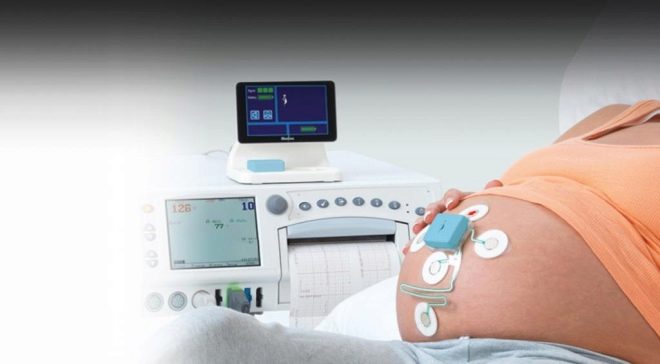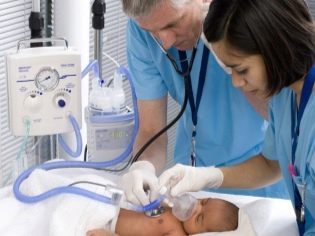Birth in the 37th week of pregnancy
Childbirth at 37 weeks gestation is not such a rarity. According to statistics, up to 10% of babies are born between 36 and 37 obstetric weeks, and even more babies are born in full 37 weeks.
We will tell about the features of such genera and possible consequences in this article.
Opinion of doctors about the term
The ratio of obstetricians to the 37th week of pregnancy is very, very ambiguous. This is due to the fact that this term is borderline. Births that take place at 36-37 weeks are considered premature, and births at 37 full weeks and several days are already normal, urgent. Therefore, at this time it is not so important how accurately the gestation period is determined. In the first place comes the degree of maturity of the baby.
Almost a month usually remains before the established day of birth, and this fact is very frightening for future mothers, because they all read and know about the horrors of prematurity. But all these horrors, most likely, do not threaten a child who is born at 36-37 or 37 weeks. Even if the morphological immaturity of the fetus is diagnosed, the weight and growth of the crumbs and the degree of its development will allow it to build quite favorable predictions for the future.
Of course, it’s better for a baby to stay in the mother’s womb for up to 40 weeks, in extreme cases, on the recommendation of WHO, up to 39 weeks, because these last days are very important - the baby increases weight due to the growth of subcutaneous fatty tissue and accumulates surfactants in the lungs.
The first factor is important so that after the birth of a child the child can retain heat without problems, and the second is for independent breathing, because during the intrauterine development of the lungs the child does not breathe, receiving oxygen from the mother's blood.
It is believed that The peak amount of surfactant reaches in the full 39 weeks of pregnancy. That is why birth two weeks before this date is, of course, risky, but not so much so that modern medicine cannot cope with the task of saving the baby. In the overwhelming majority of cases, everything finishes quite well.
The development and condition of the child
At the 37th week of pregnancy, babies actively accumulate subcutaneous fat. Baby every day becomes heavier by about 50 grams. On average, at this time children weigh from 2,200 to 3,000 grams and are about 47-48 centimeters tall. Right now is the initial formation of the immune system.
Externally, children look like newborns, but only thinner. The presence of lanugo (virgin hair on the skin), if the child is born on this period, is rare. If childbirth begins, the baby will be born in the position in which it was in the uterus in the previous days - the reversal is no longer possible, since the fetus has become too large for this.
At week 37, the process of myelination of nerve endings is completed, and therefore the nervous system of the baby, although not fully formed, is already fully functional. There are all the reflexes, he can suck, swallow, grab.
A respiratory reflex is developed, but it is possible that the amount of surfactant will not be sufficient for proper breathing, and then the baby will need resuscitation care.
Internal organs have long been formed and are already functioning (with the exception of the lungs), but signs of morphological immaturity may well be present - the size and weight of the organs is still below the norm. Some boys in this period are born with testicles that have not yet descended into the scrotum.
The viability of children at week 37 is estimated as conditional. Prematurity - in the first degree. This means that the baby will be formally considered premature or morphologically immature, but in the absence of pathologies and complications, it may well be immediately applied to the chest, and can also do without resuscitation care. (with a weight above 2500 kilograms, with spontaneous breathing and normal thermoregulation, as well as with all the reflexes).
Features of the birth process
To give birth at 37 weeks a woman can start spontaneously, herself, and it may be necessary to stimulate or conduct a cesarean section. The characteristics of each of the types of labor activity will depend on the conditions under which and why childbirth became possible three weeks before the DA.
Independent labor can begin either from contractions or from the amniotic fluid. The cause of preterm labor can be a variety of diseases and conditions of the pregnant. Most often provoke childbirth diseases of the kidneys, adrenal glands, diabetes mellitus of various types, severe obstetric history with multiple abortions or premature births in the past. Often the reason lies in the violation of hormonal levels, insolvency and weakness of the cervix.
Among those who gave birth this week are many who have been diagnosed with low water and low water, double, triple, gestosis, critically low location of the placenta. Above the probability of beginning to give birth ahead of time and for those who are very nervous, experiencing, are in a state of prolonged stress, are engaged in heavy physical labor, consume alcoholic beverages or smoke. Lack of normal nutrition, vitamins - is also one of the causes of early labor. It is noticed that male children are more often born earlier than girls.
In identifying complications that are an obstacle to further pregnancy, doctors recommend delivery at this time. Typically, such complications are hypoxia of the fetus in decompensated form, Rh-conflict with the onset of the development of hemotyl disease of the fetus, placental abruption and others. Deliveries can be stimulated by medication, but only if the cervix has reached maturity.. If it is immature (which usually happens at 37 weeks gestation), then a cesarean section is considered the best and safest option.
If the 37th week of waste water or regular contractions begin, the woman can not hesitate and try to calculate something to select the time of sending to the hospital. At this time, the rules are different: you must go to the emergency room at the ambulance, not waiting for the interval of five minutes between uterine spasms.
For a start, doctors will assess the condition of the woman in labor and her baby, then determine which births are going on - threatening, beginning or already beginning. In the first two cases, they will try to extend the pregnancy in the hospital for at least one more week.
In the case of childbirth already begun, the process is irreversible, it is necessary to give birth. During such labor, the likelihood of complications at any stage increases by 30%, so the medical staff will more closely monitor how the labor activity develops.
If everything goes according to the classical type, they will not interfere in this process. If contractions are not strong enough, dilation of the cervix is slow, a decision can be made about drug stimulation with oxytocin. If, on the contrary, there are rapid deliveries with intense and frequent contractions, they will be tried to slow down again with the help of hormonal preparations and antispasmodics.
In the absence of the effect of active obstetric actions, in the absence of full labor activity, an emergency caesarean section is performed.
Implications for mother and fetus
Premature births are dangerous primarily because they often occur with complications.At the time of birth, the baby can get a birth injury if the labor activity is rapid. And in normal labor, this probability is higher.
After birth, everything will depend on how much the baby has had time to gain weight and how much the surfactant has produced the alveoli of its lung tissue. If it weighs from 2500 kilograms, there are no signs of hypotrophy, then it will be able to retain heat without help. If the baby easily loses it, he will be shown to stay in a special hood, where the optimum temperature will be maintained for the first few days of life until the amount of subcutaneous fat is sufficient for independent thermoregulation.
If the lung tissue has not matured enough (the risk at 37 weeks still exists), distress syndrome may develop - acute respiratory failure. In this case, the baby will be shown to be in intensive care on a ventilator until the lungs can breathe on their own.
The probability that the lungs are not ready for independent breathing at this time is small, but it is quite real, as are the risks of acute hypoxia and disorders of cerebral circulation.
Resuscitation care will be provided in all cases.. Most often, children born on the 37th week can be saved. But the consequences of such violations are not subject to prediction, it all depends on how serious the violation will be and which parts of the brain will suffer.
At best, the consequences will manifest minor neurological symptoms, at worst - total and irreversible anomalies of the central nervous system - cerebral palsy, hearing and vision impairments, paresis, mental and mental abnormalities in the future. Severe consequences mainly threaten children who are born long before the deadline. In the case of those born in the 37th week, it is rather a rarity.
Usually, babies adapt well to new conditions of existence. But postpartum mom may be complicated. Early delivery is dangerous with ruptures of the cervix and perineum, inflammatory processes in the uterus, and therefore special control will be established for the condition of the puerperal.
Patient Reviews
According to reviews of women whose birth began at 37 weeks of pregnancy, they were quite difficult. Experts believe that the psychological state plays a role - the woman is very agitated, worries about the child, and therefore cannot concentrate on the generic process and the right behavior.
After giving birth, children are not immediately brought to everyone. Some manage to see the baby only a few days after all the threats and risks to his life have passed. With lactation, problems usually do not occur, milk comes on time and in sufficient quantity..
Only a small percentage of mothers indicated that the child had problems with the lungs or other consequences of immaturity, by virtue of which they were transferred from the maternity hospital to the children's hospital hospital for further observation and treatment.
About what happens to the baby after birth at 37 weeks, see this video.

